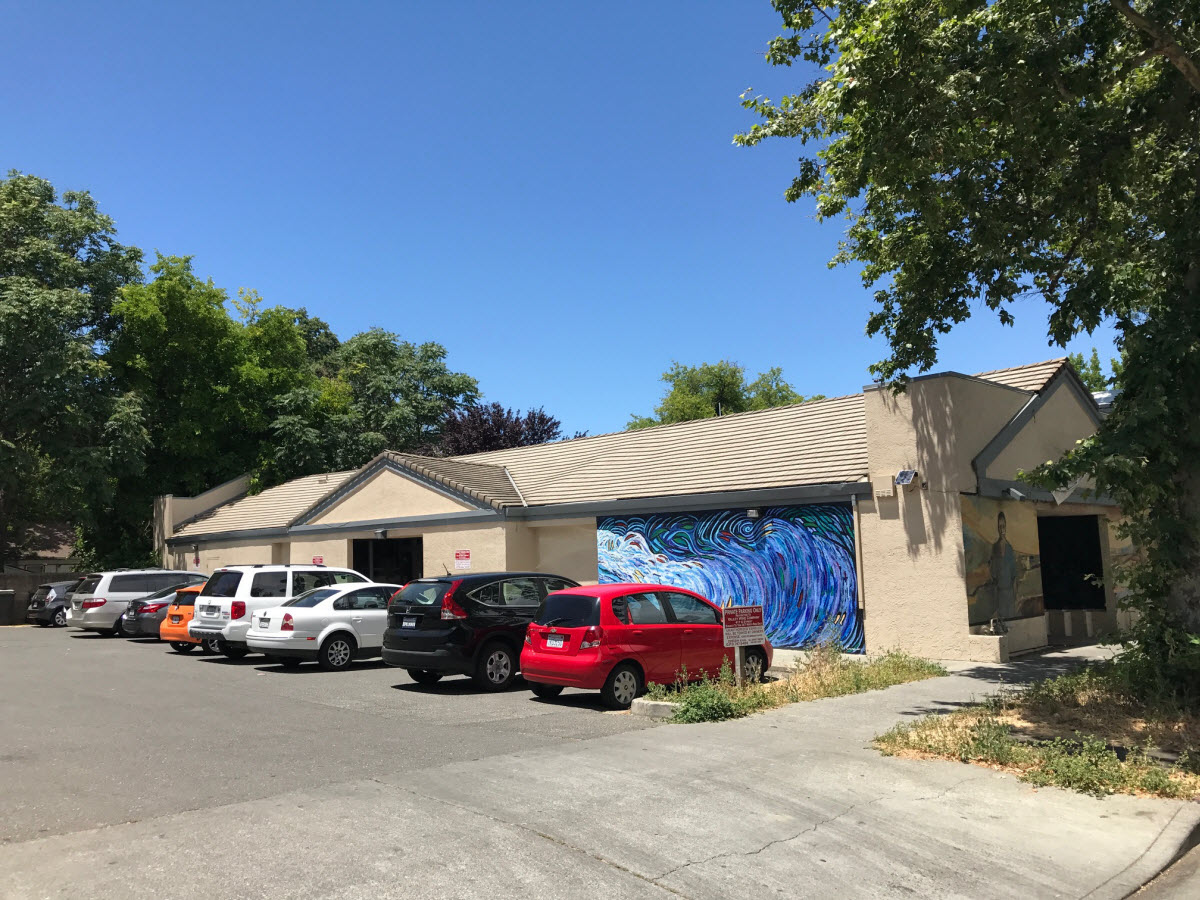
As the Davis community continues the conversation around creating a vision for our downtown, updating our Core Area Specific Plan and replacing the current zoning ordinances and design guidelines with form-based codes, what follows are some relevant thoughts from the City’s form-based codes advisor, Opticos Design: http://opticosdesign.com/mini-parking-craters-ideal-missing-middle-housing/.
They write: “How often will you be encouraged to walk down a street if you are walking past parking lots versus engaging storefronts or stoops? Spend some time browsing Google Maps and across the country, you will see a landscape punctuated with empty surface parking lots.”
“Zoning codes frequently set minimum parking requirements based on parking generation rates measured during peak demand and do not differentiate requirements for walkable urban environments from drivable suburban ones. Therefore, codes often require far more off-street parking than is actually needed most of the time, which means that building owners or new developers have to tear down existing structures to make room for parking.”
This results in what Streetsblog editor Angie Schmitt dubbed “parking craters.”
“Streetfilms made a great video describing the problem of parking craters in many U.S. cities. In many urban centers like Cleveland, OH, historic buildings were torn down to make way for surface parking lots. In Houston, TX, there are some 30 parking spots for every person in the city. Offering a large amount of free parking encourages workers to commute to work by private car, thereby creating more traffic and more air pollution, as well as huge, potentially menacing vacant areas that separate city neighborhoods.”
But they argue that not all parking craters are created alike: “Urbanists across the country who work on projects to revitalize city neighborhoods often have to deal with “mini parking craters,” like those shown in the aerial view of Cincinnati’s Northside neighborhood above. Mini parking craters are just as detrimental to a community as large ones, particularly to walkable urban neighborhoods, but they are also an opportunity.”
Types of mini parking craters “include buildings torn down to create parking for an existing commercial building, probably as use within the building changed; buildings torn down to make room for parking for an existing residential building; and an out-of-character parking lot in front of a newer, small commercial building. These parking craters do not individually seem like they should have too much impact on the quality of a neighborhood, but as parking craters become more numerous, so does their negative impact on community character and walkability.”
“A good method to detect these “mini craters” is to generate figure ground maps of a neighborhood to see where the continuous patterns are disrupted by gaps. This should be an early analysis step in every neighborhood planning process.”
“It’s a problem, but also it’s an opportunity, because the land is there,” says Prof. Norman Garrick of the University of Connecticut. “We have land banked these areas but you need to have the right policies, you need to have the right mindset if you’re going to change how these cities have evolved.”
They argue, “Especially in urban areas, land that was once set aside as off-street parking by local zoning codes could be better used for housing.”
While large parking craters, like the examples shown in the film of Cleveland and Houston, “are appropriate for infill featuring buildings five stories high and greater because of their proximity to downtown, “mini craters” are an ideal location for Missing Middle housing or tactical urbanism to incubate small, local businesses.”
“Community members sometimes oppose redevelopment of these empty parking lots citing density and traffic as a concern. Well-designed compatible infill on these lots will make neighborhoods more vibrant and more walkable. This urban repair should be a goal for all neighborhood planning and coding projects,” says Opticos Principal Dan Parolek.
“Parolek recently gave a webinar through the American Planning Association that discussed how communities could use planning, design, and policy to minimize and mitigate the impact of overly dense infill on existing neighborhoods. He says that Missing Middle housing types, like duplexes, townhouses, and live/work units, add compatible density to a neighborhood and promote local businesses by putting more feet on the ground.”
“Missing Middle housing types are often a perfect urban repair solution for these mini craters. They offer quality, sustainable housing choices that appeal to both Millennials and Baby Boomers—two growing groups that more and more are seeking a walkable, car-free lifestyle,” Parolek added.






Yes, very much yes, but:
* I would suggest an even higher proportion than normal for Davis of lower-income housing Downtown. Building dense will make it easier, but there have to be complementary services as well, e.g. not just happy hour over-rated tiny pizza slices for $5.
* Hiding parking behind buildings also generates motor vehicle traffic, but probably less since the street is more lovely — I’m not using “walkable” except in quotes as it’s very subjective and word du jour. Requiring parking underground may reduce traffic even more, as it’s expensive to build. But also paying fees should be separate from rents, etc.
* Let’s see how much access is created by the existing parking Downtown and make a goal to shift the access too to other modes, as much as possible (the hard possible). It can help if stores etc. that need some closer vehicle access are on the periphery, e.g. accessible via alley. Incentives to delivery-ize locally-purchased goods should be considered.
* Street parking is also ugly and blocks the hell out of stores and storefronts. Imagine children, shorter persons, people in wheelchairs on the edges of the motorized vehicle channel that dominates the street (the street is the space between buildings): Their friend, someone cute, etc is moving by on this “SIDEwalk” opposite, unseen due to blockage by temporarily inert motor vehicles that radiate heat on hot days or reflect the sun to increase the temperatures all around.
Increasing building heights to 3 or 4 stories Downtown, but keeping a similar amount of parking behind stores, hoarding the streetscape etc. will be worthy of not much more than a “Meh!” on the Richards exit on I Hatey, whereas “Child-friendly, truly walkable, partly carfree downtown” on the cover of Huff Post and Time will fill the parking lot over the interchange, with autonomous shuttles ferrying excited and/or satiated persons during most hours of the day, complemented with increasing share by appropriate regional public transportation with the same destination… not to mention velo-conveyances, subject of the article on the front page of the NYT in 2023: “Designing Downtown with Confidence and the Return of the Bicycle to Davis”.
Every time I hear the term “parking craters” I get a mini-throw-up.
And then fails to explain where people’s cars go.